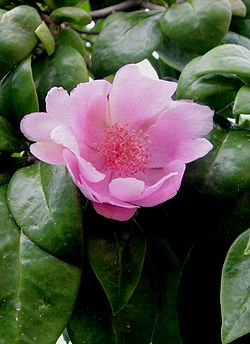| Leuenbergeria quisqueyana | |
|---|---|
 | |
| Scientific classification | |
| Kingdom: | Plantae |
| Clade: | Tracheophytes |
| Clade: | Angiosperms |
| Clade: | Eudicots |
| Order: | Caryophyllales |
| Family: | Cactaceae |
| Genus: | Leuenbergeria |
| Species: | L. quisqueyana |
| Binomial name | |
| Leuenbergeria quisqueyana (Alain) Lodé | |
| Synonyms [2] | |
| |
Leuenbergeria quisqueyana is a species of flowering plant in the family Cactaceae . [2] [3] It is sometimes referred to by the common name Bayahibe rose, [4] and is endemic to the Caribbean island of Hispaniola, in the Dominican Republic. [5]
